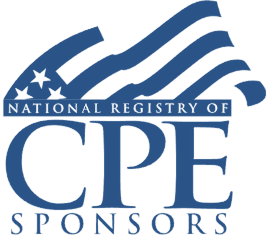Welcome! Save 30% on all CLE, CPE, and Professional Skills webinars, plus 15% off any annual pass with code CYBER2025
About the Course
Introduction
This course will discuss Roth IRAs and Roth conversions for tax advisers working with clients eligible to make IRA contributions, conversions, and withdrawals. The panelist will discuss determining taxpayers who benefit most from conversions, calculating the tax on a Roth conversion, and--most importantly--how to avoid tax surprises when affecting these conversions.
Description
Roth IRAs certainly have advantages, such as no required minimum distributions, and beneficiaries will receive the Roth IRA tax-free. There may be new tax legislation that could change the way we plan for retirement assets. There are proposals to change the deduction for retirement plan contributions, making Roths much more valuable.
The webinar will review the impact of a Roth conversion on other tax aspects such as the QBI deduction, Social Security taxation, Medicare premiums, AMT, capital gains taxes, and NIIT. Many taxpayers have been circumventing the AGI limitation on Roth IRA contributions with the back-door Roth. Still, many eligible taxpayers are not taking advantage of the mega back-door Roth.
Our presenter will show how your client can put away up to $42,000 into a Roth. As a bonus, he will also review net unrealized appreciation (NUA) and how taking advantage of NUA can reduce your client's tax bills.
Listen as Lawrence K.Y. Pon, CPA/PFS, CFP, EA, USTCP, AEP of Pon & Associates, explains how Roth IRAs can be used to save substantial tax, recent legislation affecting these retirement planning vehicles, and how to avoid unexpected tax consequences during conversions.
Presented By

Mr. Pon has been in practice since 1986 providing comprehensive accounting, tax, payroll, and business advisory services. He specializes in tax preparation, tax representation, tax planning, business planning, financial planning, and estate planning. Services include IRS and state audit representation, business startup services, and charitable planning. Mr. Pon is a frequent author and lecturer to financial and legal professionals and the public on tax and financial planning topics.
-
BARBRI is a NASBA CPE sponsor and this 110-minute webinar is accredited for 2.0 CPE credits.
-
BARBRI is an IRS-approved continuing education provider offering certified courses for Enrolled Agents (EA) and Tax Return Preparers (RTRP).
Date + Time
- event
Thursday, November 7, 2024
- schedule
1:00 p.m. ET./10:00 a.m. PT
- Eligibility
- Roths compared to traditional IRAs
- Recent legislation affecting IRAs
- Back-door Roths
- Mega back-door Roths
- Traditional IRA conversions
- Planning opportunities
The panelist will review these and other key issues:
- Tax traps to consider before recommending Roth conversions
- Calculating the tax due on a Roth conversion
- Making a back-door and mega back-door conversion
- Changes made by SECURE Acts 1 & 2 and recent guidance from the IRS regarding IRAs
Learning Objectives
After completing this course, you will be able to:
- Identify tax traps to consider before recommending Roth conversions
- Calculate the tax due on a Roth conversion
- Understand the impact of making a back-door and mega back-door conversion
- Differentiate a Roth IRA from a traditional IRA
- Ascertain the changes made by the SECURE Act, CARES Act, and recent legislation related to IRAs
- Field of Study: Taxes
- Level of Knowledge: Intermediate
- Advance Preparation: None
- Teaching Method: Seminar/Lecture
- Delivery Method: Group-Internet (via computer)
- Attendance Monitoring Method: Attendance is monitored electronically via a participant's PIN and through a series of attendance verification prompts displayed throughout the program
- Prerequisite: Three years+ business or public firm experience preparing complex tax forms and schedules, supervising other preparers or accountants. Specific knowledge and understanding of individual income taxation, including itemized deductions, individual income tax credits, net operating loss limitations including carrybacks and carryforwards.

BARBRI, Inc. is registered with the National Association of State Boards of Accountancy (NASBA) as a sponsor of continuing professional education on the National Registry of CPE Sponsors. State boards of Accountancy have final authority on the acceptance of individual courses for CPE Credits. Complaints regarding registered sponsons may be submitted to NASBA through its website: www.nasbaregistry.org.

BARBRI is an IRS-approved continuing education provider offering certified courses for Enrolled Agents (EA) and Tax Return Preparers (RTRP).

BARBRI CE webinars-powered by Barbri-are backed by our 100% unconditional money-back guarantee: If you are not satisfied with any of our products, simply let us know and get a full refund. Contact us at 1-800-926-7926 .
Unlimited access to premium CLE courses:
- Annual access
- Available live and on-demand
- Best for attorneys and legal professionals
Unlimited access to premium CPE courses.:
- Annual access
- Available live and on-demand
- Best for CPAs and tax professionals
Unlimited access to premium CLE, CPE, Professional Skills and Practice-Ready courses.:
- Annual access
- Available live and on-demand
- Best for legal, accounting, and tax professionals
Unlimited access to Professional Skills and Practice-Ready courses:
- Annual access
- Available on-demand
- Best for new attorneys
Related Courses

Deducting Trust and Estate Charitable Donations: Trust Provisions and Wills, Recent Court Cases, Reporting Issues
Thursday, January 22, 2026
1:00 p.m. ET./10:00 a.m. PT

Tax Research Techniques: Internet Tools, AI Caveats, Methodology, Documentation and Communication of Results
Wednesday, January 21, 2026
1:00 p.m. ET./10:00 a.m. PT

Recent IRS S Corporation Initiative: Losses in Excess of Basis, Taxable Distributions, Handling the Examination
Friday, January 16, 2026
1:00 p.m. ET./10:00 a.m. PT

Family Office Tax Update: Foundational Principles and Emerging Issues
Available On-Demand
Recommended Resources

How CPE Can Bridge the Gap Between What You Know and What You Need to Know
- Career Advancement


